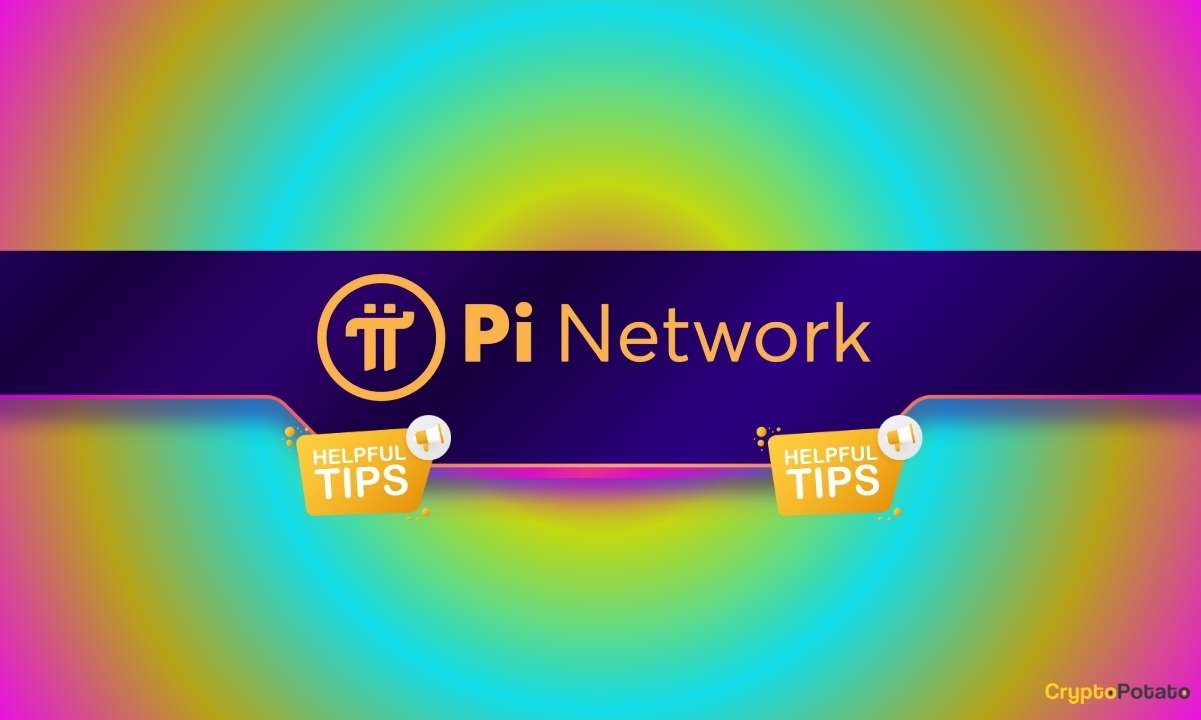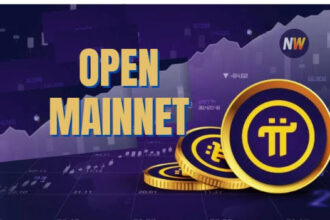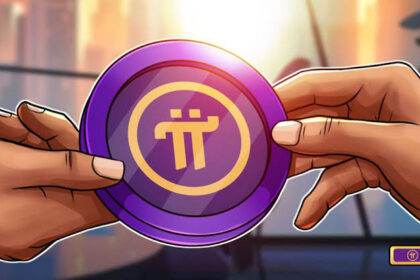The Pi Network, a cryptocurrency project aiming to democratize digital currency mining, has garnered significant attention since its inception over five years ago. With its promise of allowing individuals to mine Pi coins using only their mobile devices, the project appeals to those excluded from traditional mining due to the high costs and technical expertise required. However, despite its ambitious vision, the project remains highly controversial. The main criticisms stem from the prolonged delay in launching its native token and open mainnet, raising doubts about its legitimacy and future.
As the Pi Network nears a critical milestone—completing the Know-Your-Customer (KYC) verification for its target of 15 million users—the debate intensifies. Is this a groundbreaking initiative poised to revolutionize the crypto world, or a well-crafted scheme destined to disappoint?
The Appeal of Mobile Mining
At the heart of Pi Network’s vision is accessibility. Unlike traditional cryptocurrency mining, which requires energy-intensive hardware setups, Pi allows users to mine directly from their smartphones without significant energy consumption. This innovation aligns with the growing demand for environmentally friendly solutions in crypto and could potentially make mining accessible to billions of smartphone users worldwide.
The app runs in the background, verifying transactions on the network while consuming minimal resources. This eliminates the barriers associated with high energy costs and technical requirements, opening the door for crypto adoption in underserved regions where financial inclusion remains a challenge.
However, this simplified approach raises questions about its viability. Critics argue that without energy or computational investment, the Pi token might lack intrinsic value, a core tenet of many established cryptocurrencies like Bitcoin and Ethereum.
Prolonged Delays: A Red Flag?
Despite its promise, Pi Network has yet to deliver on its most crucial milestones—the launch of its **open mainnet** and the native Pi token. The project’s closed mainnet was introduced as a transitional phase, allowing users to test and interact within the ecosystem. However, the lack of a clear timeline for transitioning to the open mainnet has led to widespread skepticism.
The Pi Network team has repeatedly assured users that the launch is imminent but tied the mainnet’s release to achieving a KYC milestone of 15 million verified users. According to the project’s latest updates, 14 million individuals have completed the process, leaving just 1 million more before the open network launch can proceed. While this suggests progress, many in the community remain doubtful. Delays in the crypto world often lead to diminished trust, and Pi Network’s five-year wait has only fueled accusations of stalling.
Divided Community Sentiment
The Pi Network community is sharply divided into optimists and skeptics:
The Optimists: Supporters argue that Pi Network’s cautious approach demonstrates a commitment to building a secure and scalable ecosystem. They believe the delays are necessary to refine the platform and comply with regulatory frameworks, especially given the project’s global reach. The recent updates, including KYC progress and technical enhancements, are seen as positive steps toward the long-awaited launch.
The Skeptics: Detractors view the prolonged delays as a sign of deeper issues. Some suspect that the project lacks the technological foundation to deliver on its promises, while others label it outright as a scam. The absence of a tradable token or open network has led to allegations that Pi Network is exploiting its user base for data harvesting or ad revenue, with no intention of delivering a functional cryptocurrency.
Is Pi Network a Scam?
The question of whether Pi Network is a scam is a recurring theme in discussions about the project. While the platform has not asked for monetary investments—one of the hallmarks of a crypto scam—it has amassed a massive user base by promising future rewards. The lack of transparency regarding the token’s eventual value, utility, and launch timeline exacerbates concerns.
However, labeling Pi Network as a scam might be premature. The project’s consistent updates and efforts to meet its KYC milestones suggest a genuine attempt to build a functioning network. The skepticism could stem more from frustration over delays rather than evidence of malicious intent.
The KYC Milestone: A Step Forward?
Pi Network’s insistence on completing the KYC process for 15 million users before launching its open mainnet is both innovative and contentious. On the one hand, this requirement aims to ensure that the ecosystem is secure and compliant with anti-money laundering (AML) regulations, enhancing its legitimacy. On the other hand, it has created a bottleneck, delaying the mainnet launch and fueling criticism.
According to Pi News, only 1 million more users need to complete KYC for the milestone to be achieved. While this is encouraging, the question remains: what happens next? Will the open network launch immediately, or will there be further delays? The community’s patience is wearing thin, and the project’s reputation hinges on meeting its promises soon.
Recent Updates: Preparing for the Mainnet
To address concerns and build momentum, Pi Network has rolled out significant updates in preparation for the open mainnet. These updates include:
1. Enhanced KYC Verification: Streamlining the process to verify users more efficiently and reach the 15 million target sooner.
2. Technical Upgrades: Strengthening the closed mainnet infrastructure to ensure a smooth transition to the open network.
3. Ecosystem Development: Expanding the range of decentralized applications (dApps) and services within the Pi Network to increase utility and engagement.
These steps indicate that the team is actively working toward the project’s goals, though the lack of a definitive timeline continues to be a sore point.
The Bigger Picture: Democratizing Cryptocurrency
Beyond the controversies, Pi Network represents a broader trend in the crypto space: the push to democratize access to digital currencies. By enabling mobile mining, the project has already achieved significant user adoption, particularly in regions where traditional crypto mining is unfeasible. If successful, Pi Network could pave the way for similar projects aimed at making blockchain technology more inclusive.
However, success depends on several critical factors:
Utility: The Pi token must have tangible use cases within and beyond the ecosystem to gain value and user trust.
Regulatory Compliance: Navigating the complex global regulatory landscape is essential for long-term viability.
Community Trust: Delivering on promises and maintaining transparent communication are vital to rebuilding trust among skeptics.
Final Analysis: Potential vs. Pitfalls
The Pi Network is at a crossroads. Its vision of accessible, eco-friendly crypto mining is undeniably appealing, and the project has made significant strides toward achieving its KYC milestone. However, the prolonged delays in launching the open mainnet and native token have cast a shadow over its credibility.
For the optimists, Pi Network represents a revolutionary step toward making cryptocurrency more inclusive. For the skeptics, it is a cautionary tale of overpromising and underdelivering. Whether the project ultimately succeeds or fails will depend on its ability to meet its promises in the coming months.
The crypto world is watching closely, and the stakes could not be higher. If Pi Network delivers, it may reshape the landscape of digital currencies. If it doesn’t, it risks becoming another name in the growing list of unrealized crypto dreams.

















REWARD CODE: 258102
Keep mining Pi! Reactivate if you have given up! Pi is well worth your few second a day effort. It is the only free mining Layer 1 crypto project with over 100 million people joined and 55 million miners active. Remember , money goes to wherever people are. Pi communities in over 230 countries worldwide are the most vibrant communities. It has over 3.1 million followers in X and will soon catch up with the 2nd most popular crypto Ethereum ‘s 3.2 million. The long journey of 5 year development is near completion. Pi Network has plan to open mainnet in 2024, your efforts will be greatly rewarded soon! The Pi IOU has been trading in several exchanges since January 2023 and the price is at over $40/Pi. Why do you think that it can commend such a high price before it even officially goes public? Please think harder!
Mine Pi for free on your phone! I am sending you 1π! To claim your Pi, follow link https://minepi.com/yajer72 use (yajer72), your invitation code.
Downlaod BOTH Network Now and earn coins.
Referral Codel : hardstock72
https://play.google.com/store/apps/details?id=com.zantise.both_network